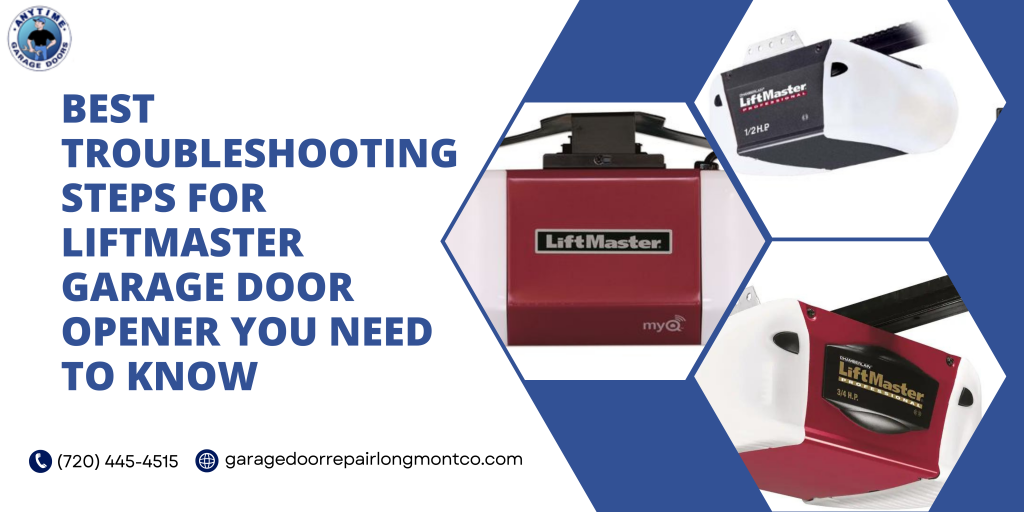Troubleshooting Steps for Liftmaster Garage Door Opener You Need to Know

Your Liftmaster garage door opener is a reliable and convenient device that makes garage In and Out convenient and hassle-free. However, like any mechanical system, it occasionally encounters numerous flaws that require troubleshooting. Instead of immediately calling a professional, you can save time and money by independently diagnosing and resolving some common problems. In this guide, we’ll walk you through troubleshooting common issues with garage door openers effectively.
Troubleshooting steps to address common errors
Automated issues-
- Remote Control Batteries: Before diving into more complex troubleshooting, start with the basics. Check the batteries in your remote control to see whether they are weak or up to date. Remember. Weak or dead batteries can cause communication issues between the remote and the door opener.
- Reprogram the Remote: If your remote control has fresh batteries and still doesn’t work, it’s better to reprogram it. Refer to your garage door opener’s manual for specific instructions on how to do this.
- Check for Interference: Interference from other electronic devices can sometimes disrupt the signal between the remote control and the opener. Ensure there are no electronic devices nearby that could be causing interference.
Wall control panel issues-
Next comes wall control panel-related issues that diminish the overall effectiveness of garage door openers. Here are some of the errors and their countermeasures.
- Verify Lock Mode: Some garage door openers have a “Lock” feature on the wall control panel that prevents the door from opening with the remote. Check if this feature is accidentally activated.
- Inspect Wiring: Ensure the wiring connected to the wall control panel is secure and undamaged. Loose or damaged wires can prevent the wall panel from functioning correctly.
The door does not properly open and close
- Check Safety Sensors: Lift Master garage door openers are equipped with safety sensors near the floor on each side of the door. Ensure that these sensors are aligned and free from obstructions. If they’re misaligned or blocked, the door won’t close.
- Adjust Limit Settings: If your door isn’t opening or closing all the way, you may need to adjust the limit settings on the opener. Refer to your user manual or instructions manual to know about how the process is done.
- Lubricate Moving Parts: Over time, the moving parts of your garage door system can become dry and squeaky. Lubricate the rollers, hinges, and springs to ensure smooth operation.
Terrible Noises
At last, when you experience a horrible noise in your Liftmaster garage door opener, it means some serious issue is coming in the way, and it’s better to troubleshoot it on time.
- Tighten Loose Hardware: Inspect and tighten any loose hardware, such as nuts and bolts on the door and opener, if you hear rattling or squeaking noises.
- Inspect the Door: Check the condition of the garage door itself. Any damaged or warped sections can lead to unusual noises during operation.
Final Thoughts!
While lift master garage door openers are known for their durability and reliability, occasional issues can arise. By following these troubleshooting steps, you can often resolve common problems independently. However, you may encounter more complex issues or are unsure about any aspect of the troubleshooting process. In that case, contacting a professional garage door technician for assistance is always a good idea. Regular maintenance and prompt problem-solving will help ensure that your garage door opener in Longmont continues to serve you well for years.
